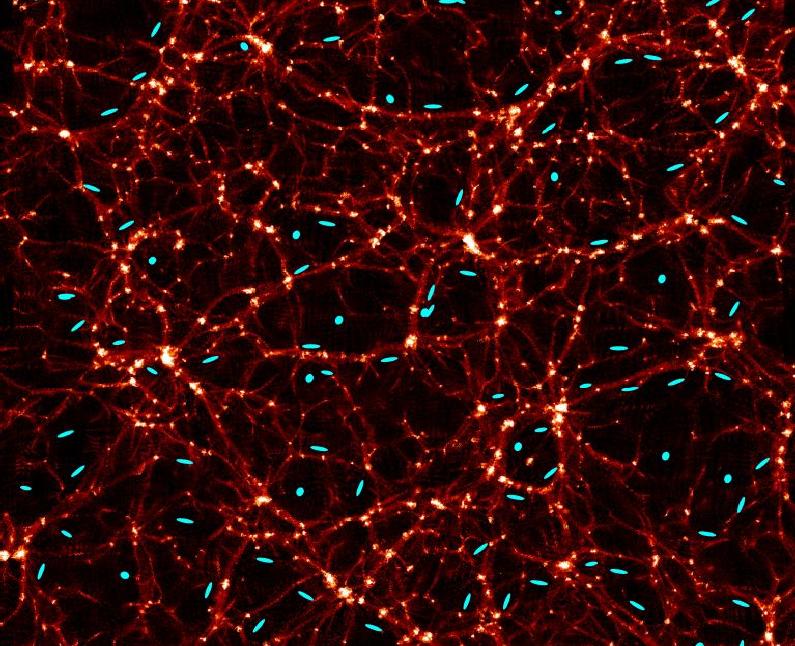The Effect of Weak Lensing

Image taken from http://www.cfht.hawaii.edu/News/Lensing/
This image shows a 3D computer simulation of dark matter. Colour represents density, so that brighter areas correspond to denser regions of dark matter. The blue disks on the far face of the box (left side) represent three distant galaxies. The yellow lines show the light traveling from these galaxies - when the light encounters dark matter, it is slightly bent by weak lensing. The blue disks on the near face of the box (right side) show how the galaxies would appear to observers on earth - the size, shape and orientation of the galaxies appear different because their light has been weakly lensed by the dark matter.

This image is more like what we actually see in the sky - it's as if we were looking at the face of a box like the one above. The red and white filaments of dark matter would be impossible to see in real life, but the blue galaxies would be visible. You can see that, on average, the galaxies seem to be elongated along the filaments of dark matter - this is because the light from the galaxies has been weakly lensed by the dark matter. By carefully measuring this effect in many galaxies over large areas of the sky, astronomers can reconstruct what the invisible dark matter must look like.